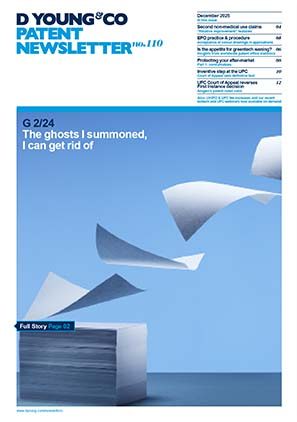EU design system: proposed reforms to EU design registrations
In what is welcome news, the European Commission has put forward a number of beneficial proposals for reforming the design registration landscape within the EU. This follows some consultations undertaken over the past couple of years.
A number of changes have been proposed that are in favour of current or future owners of design registrations in the EU. The most notable of these proposed changes include:
Removal of the unity of class requirement for multiple designs in a registered design application
If adopted, this change would allow a single registered design application in the EU to contain multiple designs in any combination of Locarno Classifications.
This change would then mean that designs respectively directed to, for example, a mobile phone in Locarno Classification 14; a mobile phone cover in Locarno Classification 03; and a logo in Locarno Classification 32, could then all be pursued in a single registered design application in the EU, whereas currently this would require three separate registered design applications.
Reduction in design registration of official fees
The proposal also includes a number of options to lower the official fees which would be payable to secure an EU design registration.
Specifically, and for an EU design registration application where no deferred publication is requested, a comparison between the current official fees, and the least-generous proposed reduced official fees from the proposal, are shown in the table below.
| Official application fees (from filing through to registration) | Current official fees (EUR) | Proposed reduced official fees (EUR) |
|---|---|---|
| Design 1 in application | 350 | 250 |
| Each of designs 2-9 in same application | 175 | 125 |
Ⓓ symbol for design registrations in the EU
The proposal also allows for the usage of a Ⓓ symbol (a “D” in a circle) to indicate the presence of an EU design registration. This would harmonise the position with EU trade marks, where it is already possible – but not mandatory – to indicate the presence of such a trade mark using an ® symbol (an “R” in a circle).
Broadening the scope of what is protectable under a design registration
The current legislation allows for the protection of the appearance of the whole or a part of a product resulting from the features of, in particular, the lines, contours, colours, shape, texture, and/or materials of the product itself and/or its ornamentation (surface decoration). This definition is proposed to be broadened to also include “the movement, transition or any other sort of animation of those features”.
Tying in with this, also proposed is a broadening of the term “product”, as used above to mean any industrial or handicraft item, “regardless of whether it is embodied in a physical object or materialises in a digital form”.
Collectively therefore, these changes might better allow for the protection of digital designs, and potentially also those intended for application in other virtual settings, such as the metaverse.
Broadening the rights conferred by an EU design registration
The proposal also provides that an EU design registration may be additionally used to prevent a third party from “creating, downloading, copying and sharing or distributing to others any medium or software recording the design for the purpose of enabling a product [which incorporates the subject matter of the EU design registration] to be made”.
Also proposed is the introduction of new provisions to allow the right holder of an EU design registration to stop infringing counterfeit products which transit through the EU. This change therefore mirrors a corresponding change in respect of EU trade marks, where a similar “transiting” provision has already been implemented.
Next steps
The above proposals are set to be mooted by the European Parliament and Council in the near future, and it is hoped that the proposals remain intact as part of this process. In so far as the proposals remained unscathed, the resultant changes will represent welcome news to many existing users of the EU design registration system, and will no doubt help encourage new users to the system moving forward. Interesting times lie ahead!


